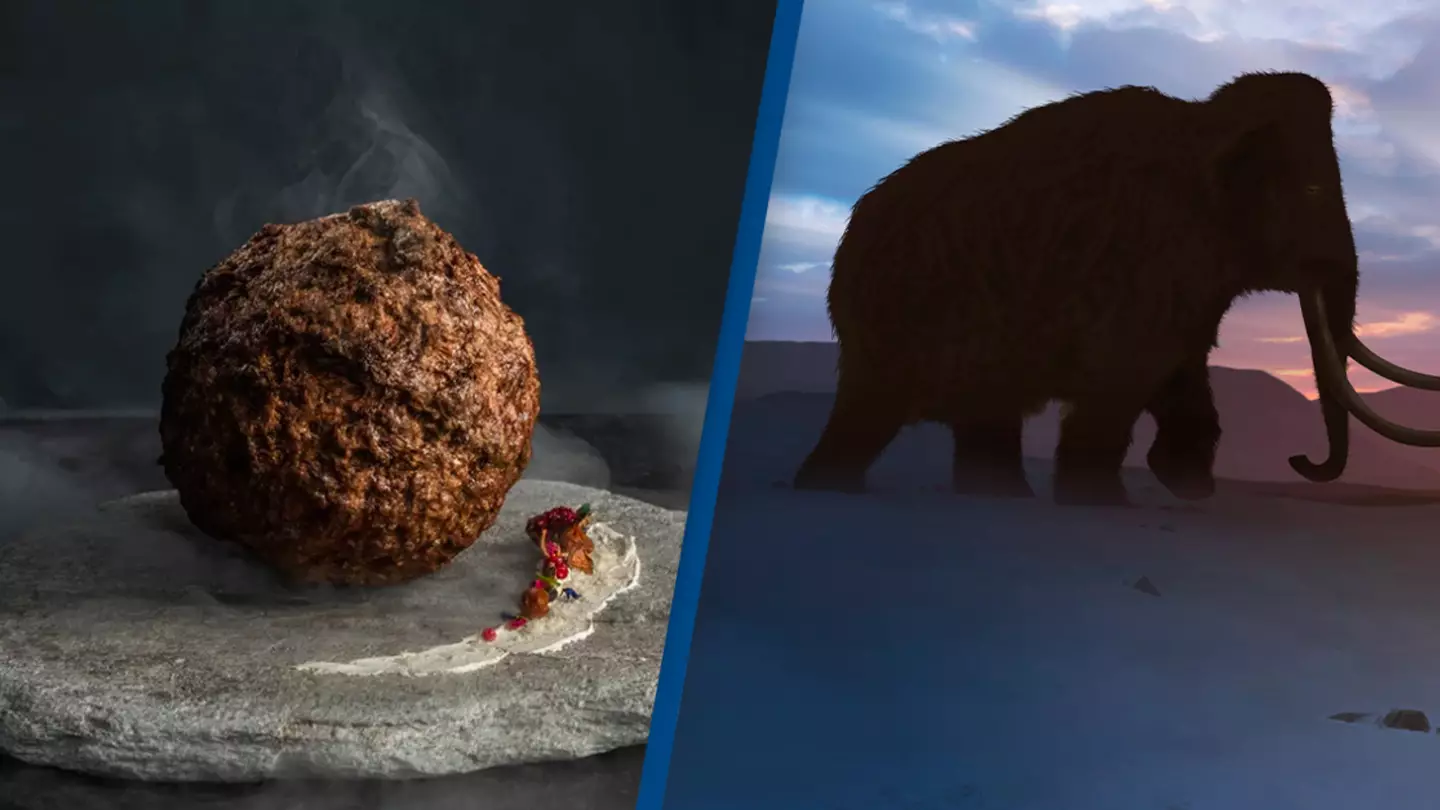
A giant meatball has been cultivated through the DNA of an extinct woolly mammoth to highlight a more sustainable method of creating meat.
The unique ball of meat, created by the Australian company Vow, was unveiled at Nemo this week, a science museum in the Netherlands, as per Reuters.
The project aims to explore the potential of grown meat cells without slaughtering animals so that people can reassess how cows and other livestock impact climate change.
Advert
Vow has previously made meat substitutes for beef, pork and chicken but now are looking to other unconventional species to create meat products.
“We have a behaviour change problem when it comes to meat consumption,” said George Peppou, CEO of Vow, as per The Guardian.
“The goal is to transition a few billion meat eaters away from eating [conventional] animal protein to eating things that can be produced in electrified systems.
Advert
“And we believe the best way to do that is to invent meat. We look for cells that are easy to grow, really tasty and nutritious, and then mix and match those cells to create really tasty meat.”
As beef production is one of the most significant contributors to the emission of greenhouse gases, the company has already begun experimenting with more than 50 species, including alpaca, buffalo, crocodile, kangaroo, peacocks and different kinds of fish.
Alpaca burger, anyone?
According to The Guardian, Tim Noakesmith, who co-founded Vow with Peppou, said they chose the woolly mammoth because it’s a ‘symbol of diversity loss and a symbol of climate change’.
Advert
He added: “The creature is thought to have been driven to extinction by hunting by humans and the warming of the world after the last ice age.”
But this isn’t the first time an extinct animal has been used for meat production.
In 2018, a company called Geltor created gummy bears with gelatin from the DNA of a mastodon.
This extinct elephant-like animal inhabited North and Central America from 23 million to 10,000 years ago.
Advert
According to TechCrunch, Alex Lorestani, Geltor co-founder, said of the project: “Mostly that means exploiting animals, or in some cases plants that are really abundant.
"We’re really good at producing huge numbers of animals, and it’s worked okay for a while.
“But today animal agriculture is a big strain on our civilization, and we can do better. That’s what we want to show.”
Topics: Food and Drink, News, Science, Climate Change
